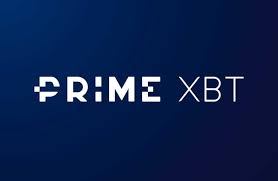Bitcoin Futures Are Back—Here’s Why
The following is a guest post by Amram Margalit, Leverate.

The following is a guest post by Amram Margalit, Leverate.
The Bitcoin cryptocurrency was launched in January 2009 and began trading at around 5 US cents per coin. It continued to trade in physical form for the next nine years, during which time it attained a high value of 19,511 USD on December 17, 2017. The US Chicago Mercantile Exchange (CME) chose this point to launch a Bitcoin futures contract, at which time Bitcoin went into freefall.
In actuality, a Bitcoin futures contract had already opened on the Chicago Board Options Exchange (Cboe) on December 10, 2017, but it made little impact on the physical market. It was only when the CME jumped on board that sellers turned out in their hordes.
Due to the extreme volatility prior to attaining its historical high, many international investors, hedge funds, and money managers had been wary of this new form of electronic money. The Cboe and the CME believed that by introducing a futures contract, it might bring some stability to the market. The opposite was to prove the case. Within three months, Bitcoin value had fallen from just under 20 thousand USD per Bitcoin to around 6 USD. The market made a vain attempt at a rally, pushing back up towards the 10 USD mark, but that faltered, and the Bitcoin value fell back down to the six-dollar mark. In recent weeks, some stability has been seen in the cryptocurrency and the price has once again started to rise. On the Bitcoin futures exchanges, prices have also started to firm. In March of 2018, the Cboe recorded a volume of 19,000 contracts, up from the January volume of 15,000.
One of the critical issues with Bitcoin is that the currency has to be “mined”. This involves computer programmers solving complex mathematical algorithms in order to verify cryptocurrency transactions on a digital ledger called the blockchain. For their efforts, crypto miners are awarded a small fraction of Bitcoins as payment for their calculation efforts. The downside is that these calculations involve much time, computing resources, and electricity. In fact, it has been calculated that the actual cost to mine one Bitcoin is around 8,000 USD, making mining while the market price is below that level unprofitable. While the market price sits above that level, then miners will be attracted back to the market. This situation has been helped by the fact that new avenues for mining have opened, including cloud-based mining resources, which have reduced mining costs still further.
The rapid rise and subsequent collapse of the Bitcoin currency coinciding the introduction of a futures contract is not unusual. In fact, similar events have occurred when futures were introduced with other financial instruments. For example, when derivatives were introduced to enable investors to hedge their exposure to bundled mortgage-backed securities in 2008, that market collapsed as well. Hedgers not only took up short positions to hedge their risk, but short sellers also appeared in droves driving the market lower. A similar situation occurred in December 2017. Holders of physical Bitcoins saw the price driven higher and higher, more on speculation and greed than for any fundamental financial reason. With the launch of the first Bitcoin futures on the Cboe, no action took place and it was only when the CME launched its contract that selling began. At that point, the aggression of the sellers of the futures and physical instrument outstripped the optimism of the buyers, and the market dumped.
One issue with both the Cboe and CME Bitcoin futures is that it is not a natural hedge for the physical Bitcoin instrument. The market will require many more months, and even years of trading to mature and for that mathematical relationship to become established. Until then, the futures contract can only be considered as an imperfect hedge for the underlying Bitcoin.
So, where does the Bitcoin market go from here? If Bitcoin’s glory days are behind it and investors stay wary of its recent volatility, then other cryptocurrencies could step into the vacuum. Increased government regulation could also hurt the popularity of this blockchain currency. However, there are more than enough supporters of Bitcoin and other cryptocurrencies to suggest that cryptocurrencies are not a simple fad, and increased interest from institutional investors in particular could see the currency and its new futures contracts become more popular. With the ever-increasing importance of the Internet in our daily lives, it is only logical that blockchain technology and its associated electronic currencies are here to stay.
Disclaimer: FinanceFeeds does not provide investment advice and does not endorse investments in cryptocurrencies, ICOs and tokens nor any activities related to them. The editorial team of FinanceFeeds does not necessarily agree with the ideas expressed in this article.









